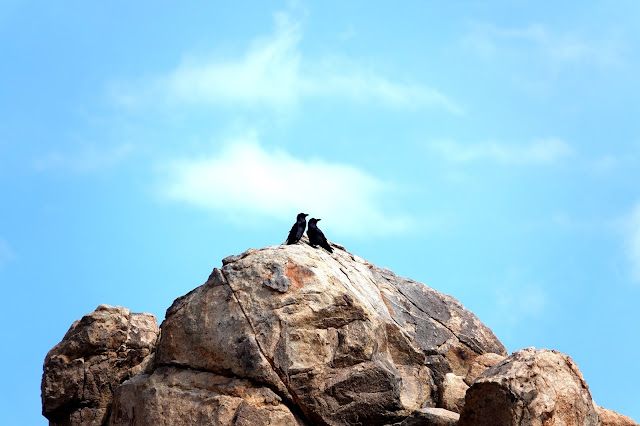THE BOYS SCOUT TRAIL - JOSHUA TREE NATIONAL PARK
“Thousands of tired, nerve-shaken, over-civilized people are beginning to find out that going to the mountains is going home; that wildness is a necessity”
― Our National Parks
― Our National Parks
The Trailhead
Thinking about backpacking? This is where you register.
The Boys Scout Trail - "In my honor I will do my best", perhaps that will be a good mantra to tackle this wonderful trails at Joshua Tree National Park. According to the trailhead info it's 7.5 miles one way, but its more like 8 1/4 miles for a total of more than 16 miles back and forth. What do I love about this trail? Other than the name of an organization that I was a part of and have admired and learned much about life and the principles it represents that have helped me to become a leader, a friend, and of service to others. The trail represents what Joshua Tree is all about, its a trail of ancient survivors, the tree itself (yucca brevifolia) dominates the first four miles, mixed in with creosote bush and other desert shrubs, and as you go along along the higher elevations at the upper slopes wash area you will find a grove of pinon pines, scrubby oaks, junipers, willows, and mojave yuccas. Hardy animals like the desert tortoise, cayotes, bobcats, mountain lions, jack rabbits, and the elusive big horn. Lizards, snakes, tarantulas and other reptiles. As you go along further the trail turns into a rocky terrains, navigating the switchback going down the mountain and then you'll find yourself walking on a canyon, "the wash" for a good two and a half miles of very soft sand. The last remaining two miles is the open desert and that's where the Indian Cove trailhead is located at the end.
Trail Map
From the Indian Cove trailhead you head back to the same direction where you started, but this it's mostly uphill, a few switchbacks that reminded of the Grand Canyon monstrous Kaibab Trail.
The consolation I have is the weather which is fairly mild, but just imagine hiking this uphill's during summer months. Test of strength, stamina, and shear determination to get back up to the top.
By the time I got up on the top of the ridge I have another 4 miles long of Joshua's
open desert safari. I have no regret, the setting sun made the place much more beautiful.
The reflections of the sunset into the boulders and the desert sands
feels like your in the red planet. The horizon bursting in
orange, red, and yellow.
Joshua Tree National Park - was created to protect this trees and it's natural environment.
Native of Southern and Eastern California
THE CALIFORNIA DESERT PROTECTION ACT
Congress found that: federally owned desert lands of southern California constitute a public wildland resource of extraordinary and inestimable value for current and future generations; these desert wildlands have unique scenic, historical, archeological, environmental, ecological, wildlife, cultural, scientific, educational and recreational values; the California desert public land resources are threatened by adverse pressures which impair their public and natural values; the California desert is a cohesive unit posing difficult resource protection and management challenges; the federal government has begun providing for protection of these lands through designation of national monuments, enactment of general public land statutes and interim administrative actions; statutory land unit designations are necessary to protect these lands.
https://www.nps.gov/jotr/learn/management/caldesprotect.htm
Joshua Tree National Park
Congress made various findings about the need to enlarge and protect Joshua Tree National Monument, established in 1936. The Act abolishes the monument and incorporates its lands into Joshua Tree National Park.
Congress made various findings about the need to enlarge and protect Joshua Tree National Monument, established in 1936. The Act abolishes the monument and incorporates its lands into Joshua Tree National Park.
Action alert: Help protect the Joshua tree
You may wonder why the western Joshua tree needs such strong protection. Though legislatively well protected on public lands, they remain vulnerable on 40% of private lands that make up their range. At the state level, protection is limited to “unlawful harvesting” under the California Desert Native Plants Act. Regionally, only the cities of Hesperia, Victorville, Palmdale, and Yucca Valley have ordinances in place with varying standards for protection. There are too many threats to the continuation of the species for these ordinances to be considered adequate protection.
Hopefully next year I'll be back in the area and do a backpacking on this trail.
I cant wait to explore the other side of the park.
For now enjoy the photo blogs of the Boys Scout Trail.
Yucca brevifolia
The early Mormon settlers named the tree Joshua during there journey to the Mojave desert. The Mexican call it "izote de desierto" (Spanish, "desert dagger")


































































































Comments
Post a Comment